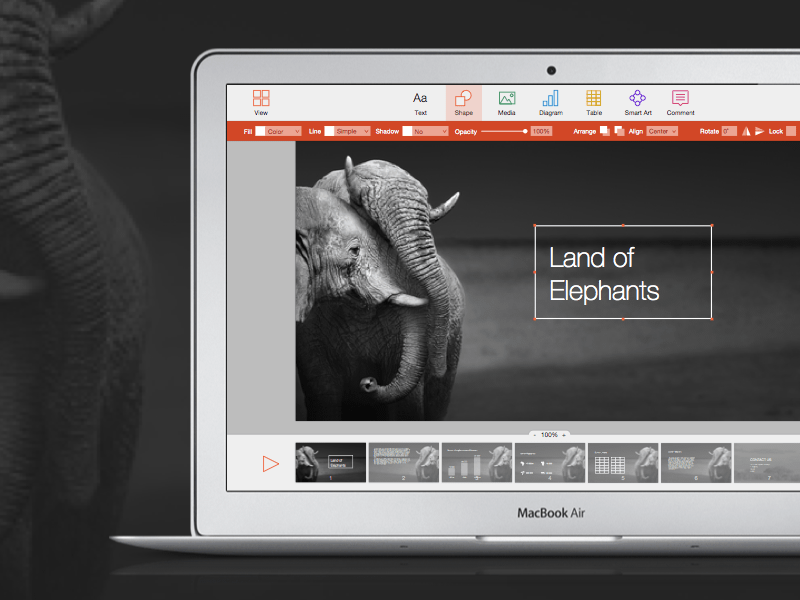Single Source For Mac
Thanks Darren, It does have quite a bit of good information. I tried the free version of Centrify and PowerBroker Identity Services in hopes that I could link my local mac account to my domain account. It works great, and covers quite a bit of what is in that PDF (Kerberos Tickets, etc.), but the browser isn't playing nicely still, which makes me wonder if it is a browser issue. However, enabling NTLM or even trying to run Chrome whitelisting our domain doesn't seem to help. It's very odd. Thank you, though! Honestly, I think you're right-I many of these issues have to do with the browser's support of IWA (Integrated Windows Authentication).


I've worked in plenty of environments where apps were not specifically Kerberos enabled but the browser didn't continuously prompt for creds, due to the use of IWA over NTLM (which works fine, btw). If you're using Chrome, you might want to focus there as the possible culprit. I know it supports IWA at some level, but add in the Mac and I'm not sure about that combo. Ryan Moat wrote: We've been tasked at getting Mac OS X machines the ability to automatically sign-in when users go to the helpdesk.
This works on Windows due to the fact that the user is logging in with their domain account. However, with Mac, even when joined to the domain, it only knows to use the local mac account, which makes sense.
So what solution is there in order to have Mac OS X send the correct account? I'm guessing a 3rd party AD solution is needed?It sounds like - perhaps - your OS X machine is setup with a matching local user account that conflicts with existing AD account(s). If there's a local account it will be used. Otherwise, for an AD-bound Mac, Safari should work for SSO - it should use Kerberos. See Also see. Hi David, I actually just did a test with this, and saw that it does not work either.

Using the free version of Centrify I am able to log into my computer using any domain user. So I decided to log in using another domain account which does not have a local account on my computer. However the Spiceworks portal still pops up the authentication dialog box. Though we haven't done anything with certs for the Spiceworks server, so when you go to the portal it does pop up a 'The certificate for this website is invalid' and we need to 'Proceed' before the page loads.
Though I don't think that would have an effect, because the Windows side works. I'm curious if the Centrify commercial version works, as they state it works with SSO.
But we'd have to be sure before the company would consider spending money. Ryan Moat wrote: Hi David, I actually just did a test with this, and saw that it does not work either. Using the free version of Centrify I am able to log into my computer using any domain user. So I decided to log in using another domain account which does not have a local account on my computer. However the Spiceworks portal still pops up the authentication dialog box.
If you're selecting a free or open source database tool for the Mac, be sure to research it carefully and thoroughly and develop your own list of must-haves. How to Use This List. The following list of free and open source database software for the Mac provides overviews only. You can even record all the audio heard on your Mac at once! Set any application as your source in Audio Hijack, then hit the record button to save its audio! Couple Audio Hijack with our utility Loopback to capture audio from one app,. Open Source software are free of cost and as good as many commercial applications. 10 Open Source Software For Mac Here is a List of the Top 10 Open Source Software for Mac.
Though we haven't done anything with certs for the Spiceworks server, so when you go to the portal it does pop up a 'The certificate for this website is invalid' and we need to 'Proceed' before the page loads. Though I don't think that would have an effect, because the Windows side works. I'm curious if the Centrify commercial version works, as they state it works with SSO. But we'd have to be sure before the company would consider spending money. You need to specify the browser because that's a key part of the equation. Try with Safari and please specify results with Safari vs.
Firefox (probably will not work), or Chrome - for which you should refer to the second link I posed above = needs the Centrify Cloud Connector and other specific adjustments. I am just going to throw this out there. I have Macs bound to AD and we have some kerberos websites that require SSO. It's not easy to get SSO working. When you bind a mac to AD it should get the appropriate SSO setup. There are additional configuration changes you can make so that it works better. (Renew ticket from screen saver login for example.) 2.
Make sure you have a ticket and can get a ticket from the TGT. Open terminal and type 'klist' this will give you your krbtgt info: If that does not exist you will need to get a tgt or figure out why you do not have one. (check your time and time server to start) kinit should get you a ticket from the command line. Also check your /etc/krb5.conf file and compare to your windows setup. Keychain also has a ticket viewer. Make sure chrome is installed.
From the command line enter the following: defaults write com.google.Chrome AuthServerWhitelist '.YOURDOMAIN.COM' defaults write com.google.Chrome AuthNegotiateDelegateWhitelist '.YOURDOMAIN.COM' Now open Chrome and try to connect to the server using the server.FQDN. This works for me. How you deploy to clients is up to you. (I use jamf) Now to get Safari Working.
I think we can all agree that patching is a task we tend to eschew. It’s not because we don’t need to do it. We absolutely must do it. However, the process of patching is unpleasant. It’s time consuming, requires manual human intervention, is ad hoc, lacks a unified solution, and creates unintended consequences that require even more work.
Unless a patch is critical to business operations or we absolutely have to install it, we all put them off for as long as we can. If you’re still in this mindset, this blog post is going to make your day. New modern patching solutions have all but eliminated the burdensome tasks associated with patching. Let’s take a look at how cloud based automation can become your single source of truth for patching.
Source Mac Address
Speed And Efficiency The #1 pain about patching is the time and resource required. Outside of Microsoft’s Patch Tuesday, patches can released on any given day. And with the increase in patches released, keeping up with new ones is a full time job. Unfortunately, no one goes to school to patch and very few companies have a person dedicated to patching. Thus, patches are too often deprioritized. This results in a constant patch backlog leaving you open to attacks. And pulling team members off of other projects to apply patches decreases productivity and puts other projects behind schedule.
Fortunately, cloud based patch automation address both of these issues. Through the use of a lightweight agent deployed to each endpoint, the current patch status can be seen for every endpoint. Patch automation can then be set to apply new patches either as they are released, or after a specific number of days to allow for testing. No more backlog or pulling team members off of other projects. And new vulnerabilities are patched in a timely manner. Multi OS And 3rd Party Patching Another dilemma with patching is the ability to patch more than a single operating system or 3rd party application with a single solution.
Many of you use WSUS or SCCM for patching Windows, but what about Mac OS X, Linux, or 3rd party apps? Yes, some solutions will provide the ability to patch 3rd Party, but it’s rarely easy or straightforward. Mac has a couple of patching options for you, but they are limited to Apple. And Linux is just hard to deal with for patches. Cloud based patch automation simplifies these issues.
Now you can patch every OS and 3rd party application from a single dashboard. Is this the holy grail of patching? If the #1 pain is speed and efficiency, you can’t achieve that with a patching stack, you need one solution that handles all of your vulnerabilities. Approve, test, manage exceptions, and remediate all within one platform. Every Endpoint, Anywhere In The World So you may be thinking, multi OS and 3rd party patching is great, but what about my cloud infrastructure and remote users.
How do I ensure these endpoints are consistently patched? If you’re used to on-premise patching or VPN requirements, sadly those options simply won’t work in today’s environments. Nearly every company now utilizes at least some cloud infrastructure and employees will continue to connect to the network from anywhere and everywhere across a variety of devices. Again, cloud based automation has your back. Because the agent is on every endpoint, it sets a persistent encrypted session with the cloud based solution, enabling you to patch and manage any endpoint, regardless of location. As long as the endpoint is online, it can be patched. So now you’re patching every OS and 3rd party software, across every endpoint, quickly and efficiently.
Visibility And Reporting Going back to the headline of this blog post, single source of truth for patching, all of the above points are fantastic, but how does this manifest for me? There are two aspects that bring this to life. The first is your dashboard. From there you can see the current status of your entire infrastructure. You’ll see new patches that are pending, any missed patches, patches that need your approval, and the number of patches applied in the last week.
Photostudio 6 for mac. PhotoStudio 6 for Mac is a powerful and easy-to-use photo editor for Mac OS X, gives you everything to enhance and print your digital photos which help bring out the creativity in you.
You can also set and manage patch policies and groups. This enables you to customize patch application by severity, location, department, and patch type.
Single Source Form
The second aspect you’re going to love is reporting. Now with a single click you can see an activity report, non-compliant devices, pending patches, or an overview report.
Single Source Property
Providing other stakeholders with the current state or your endpoints has never been easier. As you probably figured out already, Automox is your single source of truth for patching. Our automation is configurable to meet your specific needs. From set it and forget it simplicity to remediation that matches your existing patch testing workflow, Automox works with you to simply the patching experience. You get time back in your day, a reduced attack surface, and improved data security. Keeping your endpoints compliant is one less thing to worry about. To learn more about Automox’s patching system of record,.
Or for a hands on experience, you can sign up for our. You’ll have full platform access, no endpoint limits, and you don’t need your credit card.